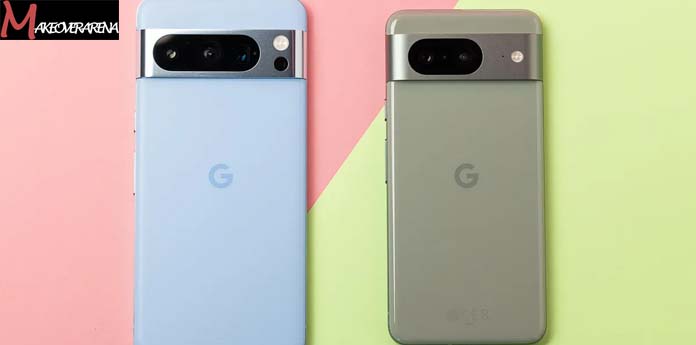If you’ve ever visited the Leaning Tower of Pisa in Italy or similar tourist spots, you’ve probably tried to take the classic picture of you appearing to support the tower. Getting this shot right can be a bit challenging since you must position yourself at the correct angle and distance. It might take a few attempts before you get the perfect picture.

The Google Pixel 8’s Ability to Perfect Photos Shows Promise and Peril of AI
Thanks to Google, you may not have to go through this kind of challenge anymore. You might only need one photo now, as the tech company offers an AI tool called the Magic Editor in Google Photos for the Pixel 8 and Pixel 8 Pro.
The Magic Editor utilizes AI technology to help people easily edit photos without requiring professional skills. It goes beyond just adjusting the lighting and brightness, although that’s part of its capabilities. For example, with a photo of the Tower of Pisa, you can change your position, make the tower bigger, remove people in the background, and even alter the background itself.
But why stop there? Google claims you can even modify the sky’s color, if that’s what you’d like to do.
“If you want to capture the perfect photo during your visit to a popular waterfall, you can remove any forgotten bag straps,” explained CEO Sundar Pichai, who first introduced this feature during Google’s developer conference in May.
Pichai went on to describe how you could also enhance the sky’s brightness and reduce cloudiness. “To add a finishing touch, you can reposition and resize your subject so they align perfectly under the waterfall.”
Pichai noted that 1.7 billion images get edited on Google Photos every month. Launching an AI-powered editor that enables quick photo adjustments is a logical progression and a smart marketing move.
“As a regular user, I’m really excited about these new tools. There are many instances where I wish I could tweak my photos, especially when taking pictures of my young kids who can’t sit still and look at the camera,” said Anton Korinek, an economics professor at the University of Virginia’s Darden School of Business and a researcher at the Oxford Center for the Governance of AI.
The Magic Editor undoubtedly offers exciting possibilities for photo editing, but it also raises questions about the authenticity and trustworthiness of online images. Google’s new Pixel phones highlight both the potential and risks of AI. On one hand, it provides new avenues for creative expression and convenience in the digital realm. On the other hand, it presents social concerns, such as promoting idealized online personas. More critically, it can erode people’s already fragile trust in online content.
Some Points to Consider About AI Picture Tools and the Magic Editor
The concerns you’ve raised about the potential misuse of the Magic Editor and other AI-powered photo editing tools are indeed valid and reflect a growing challenge in the age of advanced digital manipulation. Here are some key points to consider:
Deception and Misrepresentation
The ease of use and accessibility of such tools can enable individuals to manipulate professional photos in ways that deceive others. This has implications for the trustworthiness of online content, particularly in contexts where authenticity matters, such as news reporting and professional profiles.
Fake News and Propaganda
AI-powered photo editing tools can be exploited to create fake news, propaganda, or misleading content. Manipulated images can be used to support false narratives or sow discord, adding to the existing challenges in combating misinformation.
Memory and History Distortion
There’s the potential for individuals to misuse these tools to erase or distort their own memories and history, either for personal reasons or to present a different image of themselves online. This raises ethical concerns about historical accuracy and authenticity.
Trust in Social Media Content
The prevalence of AI-driven photo editing tools does indeed raise questions about the trustworthiness of content shared on social media. It becomes increasingly challenging to distinguish between real and manipulated images, potentially eroding trust in the authenticity of what’s posted online.
Accessibility and Usability
The ease of use of tools like the Magic Editor makes digital manipulation more accessible to a wider audience. While this can be empowering for creative expression, it also poses challenges regarding responsible use.
In response to these challenges, it’s important to consider several strategies:
Media Literacy
Promote media literacy education to help individuals become more discerning consumers of online content and better identify manipulated images.
Transparency
Encourage transparency in content creation. Users should disclose if an image has been significantly altered. Platforms can also implement features to identify edited content.
Regulation
Governments and platforms may need to implement regulations or guidelines to prevent the misuse of AI in content manipulation, particularly in cases of misinformation, deceptive advertising, and cyberbullying.
Ethical Use
Promote ethical use of AI tools and encourage users to think about the consequences of their edits on trust and authenticity.
Technology Solutions
Develop technology to detect manipulated content and label it as such. Companies like Google and Adobe are working on AI tools that can detect edits in images.
In summary, while the Magic Editor and similar tools offer exciting possibilities for creative expression, they also bring significant ethical and social challenges. Addressing these concerns requires a combination of education, transparency, regulation, and responsible use to ensure that trust in digital content is not eroded.
Check These Out
- Unlock the Power of Editing – Unleash Your Creativity with a Free Online Photo Editor
- Facebook Avatar Editor – Facebook Avatar Maker Free | #Facebookavatar
- What is Blanket Insurance – What is Blanket Insurance Limit?
- Types Of Homeowners Insurance: Factors to Consider When Selecting
- Facebook Community Standards – Facebook Community Standards Violation
- Adobe Expands Contents Authenticity Initiative Tools – Linking Crypto Wallets



